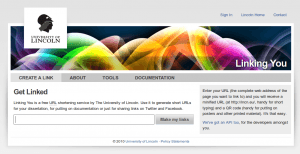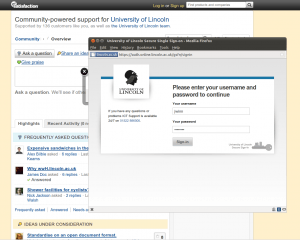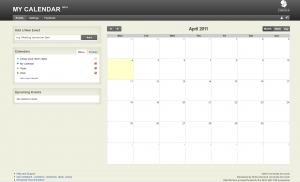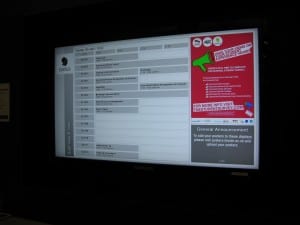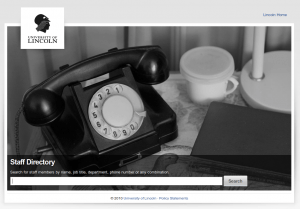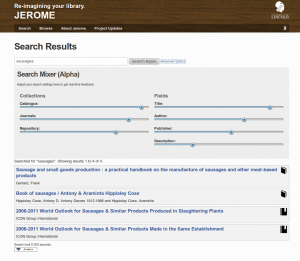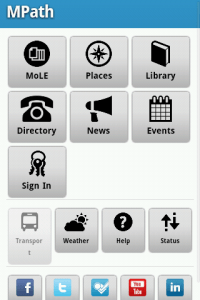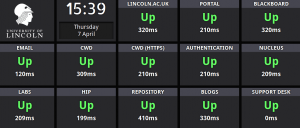I was recently asked to present a paper to the university’s Teaching and Learning Committee about the role of technology in the context of Student as Producer. The paper was well received by the committee and I have been asked to draw up a Business Case which will be presented to the Academic Board and then, hopefully, for final approval by the Executive Board. Unlike this paper, which is pretty high level, the Business Case will go into more detail about what we actually propose to do and how. Comments very welcome. Thanks to my colleague, Sue Watling, for help with the section on ‘digital inclusion’.
Pedagogy, Technology and Student as Producer
Summary
Student as Producer will have a significant impact on the work of both students and staff at the university and this paper briefly addresses the strategic role of technology and teaching and learning within the context of Student as Producer. In summary, we argue that the university can lead the sector in re-engineering knowledge creation and sharing through the open development of edgeless social learning networks, based on a methodology of peer-to-peer innovation and a commitment to digital inclusion and critical, digital literacy.
Student as Producer
Student as Producer is underpinned by progressive pedagogical theory which asserts that students can and should be producers of their social world by genuinely collaborating in the processes of research, teaching and learning. Student as Producer has a radically democratic agenda, valuing critique, speculative thinking, openness and a form of social learning that aims to transform the social context so that students become the subjects rather than objects of history – individuals who make history and personify knowledge. Student as Producer is not simply a project to transform and improve the ‘student experience’ but aspires to a paradigm shift in how knowledge is produced, where the traditional student and teacher roles are ‘interrupted’ through close collaboration and a recognition that both teachers and students have much to learn from each other. Student as Producer is not dependent on technology but rather on the quality of the relationship between teacher and student. The extent to which technology can support, advance and even progressively disrupt this relationship is therefore key.
Critical, digital literacy
Increasingly, the language of digital networks is that of ‘users’ who produce and consume ‘content’. With the availability of ‘free’ Web 2.0 tools, we are told that anyone on the web is a potential publisher of content for someone else to consume. The message from The Edgeless University (2009) is increasingly typical: In the world of Web 2.0, universities are being positioned as distinctive “resource providers” i.e. research outputs, lectures and podcasts on iTunesU, Open Access institutional repositories and and Open Educational Resources, with the expertise to “validate learning”. Student as Producer both challenges and leverages this ‘abundance’ of open resources by articulating a “pedagogy of excess”, whereby the student is encouraged and supported in being not just a student-consumer but rather a productive, critical, digitally literate social individual. In this view, technology is inclusive and understated, advocated by the institution primarily to develop the individual’s critical, social understanding and abilities which they apply to their learning and in this way technology does not become an end in itself.
Digital inclusion
Digital divides, both within higher education and beyond our institutions, derive from the social shaping of technology where technical design and implementation is influenced by organisational, political, economic and cultural factors (Bjiker and Pinch 1984, Williams and Edge 1994). Technological ‘innovation’ is often the subsequent means whereby wider social inequalities are reproduced and reinforced. For example, operating effectively within a Web 2.0 environment privileges a narrow range of access criteria and assumes pre-requisite levels of digital confidence and competence. Those who fall outside of these parameters are digitally excluded and disempowered. In the development of critical, digital literacy, Student as Producer can raise awareness of the nature and effects of inequitable digital practices and in doing so, encourage socially responsible individuals who are then able to challenge exclusive practices and ensure inclusive ways of living in society.
Learning landscapes
In itself, technology arguably has no direct bearing on educational outcome. It is the extent to which technology is understood, developed and employed within the overall social and political environment that it contributes to the social wealth, education and overall well-being of society (Downes, 2010). The typical use of technology in higher education ranges from the mundane to the instrumental to the experimental, enabling, for example, the management of courses and assessment through the Learning Management Systems (LMS), the increasingly collaborative cross-institutional nature of research through discipline-specific Virtual Research Environments (VRE) and the creation of Personal Learning Environments (PLE) where teachers and students choose technologies appropriate to their own needs and capacities. Similarly, technologies such as Blackboard, are thoroughly embedded in critical institutional functions penetrating deep into the overall ‘learning landscape’ of the university. Networked technology is now ingrained in the very ‘idea of the university’ and the social production of knowledge. It is used to both intentionally effect change (i.e. innovate) in higher education and respond to change taking place in society (i.e. facilitate). Arguably, it is not a matter of asking “what is the role of technology in higher education?”, but rather “what is the role of the university in a networked world?” (Higher Education in a Web 2.0 World, 2009)
A pedagogy of excess
Student as Producer is perfectly timed to engage with what The Edgeless University states as a “time of maximum uncertainty and time for creative possibility between the ending of the way things have been and the beginning of the way they will be.” At a time when the higher education sector is being privatised and students are expected to assume the role of consumer, Student as Producer aims to provide the student with a more critical, more historically and socially informed experience of university life, which extends beyond their formal studies to engage with the role of the university and their own role in society. Pedagogically, this is through the idea of ‘excess’ where students, undertaking a critical evaluation of their subject and of their role in society, are anticipated to become more than just student-consumers during their course of research and study (Neary and Hagyard, 2010). In practice, a pedagogy of excess re-orientates the roles of staff and students to become producers of an edgeless university and creators of social wealth.
Student as Producer responds to calls for ‘edgelessness’ by asserting a radical agenda for the development and support of technology, extending the networks and spaces that we maintain to become social learning networks or, in Vygotsky’s term, ‘Zones of Proximal Development’ (ZPD), in which social learning has the potential to change the individual and their social context (Neary, 2010). We recognise the centrality of staff and students in “driving further innovation without losing the strengths of the traditional academic environment” (Learning Landscapes, 2009) and this should be coupled with the benefits that networked technology brings to the learning landscape, not only in advancing ubiquitous access to information but also the potential for challenging and re-engineering the relationships between teacher and student engaged in collaborative research.
Peer-to-peer production
To undertake this, we recommend that a flexible, cross-departmental team of staff and student peers are convened to further the research, development and support of technology for research, teaching and learning at the University of Lincoln. The team’s primary remit will be to support the objectives of Student as Producer through technology. To achieve this, it is proposed that the team has an acknowledged research and development role, and that the work of the team is theoretically informed by the progressive pedagogy of Student as Producer so as to engender critical, digitally literate staff and students. To this effect, the team will consolidate and extend the existing collaborative work taking place between CERD, The Library and ICT Services by inviting staff and students from across the university to openly contribute. The team will offer incentives to staff and students who wish to contribute to the rapid innovation of appropriate technology for education at the university, through work-experience, research bursaries and internal and external applications for funding. A core principle of the team will be that students and staff have much to learn from each other and that students as producers can be agents of change in the use of technology in education.
Conclusion
This proposal is supported by recent NUS data, which highlights the need for greater choice in how students learn, concerns around staff ICT competency, and the appropriateness of technology used across courses. (HEFCE/NUS, 2010). Overall, recent reports support the creation of a learning landscape where the distinction between teacher and student is increasingly fluid, emphasising the role of technology to enable collaboration and the co-production of knowledge. The multi-faceted nature of the institution remains highly valued, as does the multifarious role of the teacher. However, due to changes in the production and consumption of information in society, the student’s role is being reasserted in a new form of peer collaboration; one which we might call the ‘student as producer’.
Annual Budget Required
Digital Development Co-ordinator (Grade 8 )
Student/graduate developers (Grade 4/5) x 4
Student bursaries £4000
Staff research grants: £7000
Hardware/Software: £10,000
Conferences: £4000
References
Bradwell, P. (2009) The Edgeless University, DEMOS. http://lncn.eu/dpq
Downes, S. (2011) Better Education Through Technology. http://lncn.eu/c57
JISC (2009) Higher Education in a Web 2.0 World. http://lncn.eu/kp7
Neary, Mike and Winn, Joss (2009) The student as producer: reinventing the student experience in higher education. The future of higher education: policy, pedagogy and the student experience. Continuum, London. http://lncn.eu/xz2
Neary, Mike (2010) Student as Producer: A Pedgogy for the Avant-Garde. Learning Exchange,Vol 1, No 1. http://lncn.eu/aq2
Neary, Mike and Hagyard, Andy (2010) Pedagogy of Excess: An Alternative Political Economy of Student Life. The Marketisation of Higher Education and the Student as Consumer. Eds. Molesworth, Scullion and Nixon. Routledge. http://lncn.eu/e23
NUS/HEFCE (2010) Student Perspectives on Technology. http://lncn.eu/uvw
Pinch, T. J. and Bijker W. E. (1984) The Social Construction of Facts and Artefacts: Or How the Sociology of Science and the Sociology of Technology Might Benefit Each Other. Social Studies of Science 14, 399-441. http://lncn.eu/cwz
University of Lincoln (2010) Learning Landscapes in Higher Education Final Report. http://lncn.eu/buy
Williams, R. and Edge, D. (1996) The Social Shaping of Technology, Research Policy Vol. 25, 856-899. http://lncn.eu/e49


